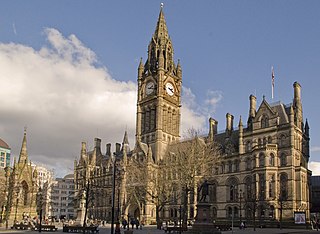
Manchester Town Hall is a Victorian, Neo-gothic municipal building in Manchester, England. It is the ceremonial headquarters of Manchester City Council and houses a number of local government departments. The building faces Albert Square to the north and St Peter's Square to the south, with Manchester Cenotaph facing its southern entrance.
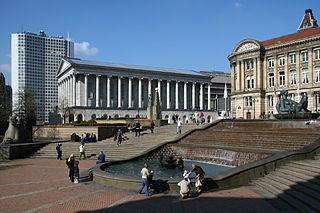
Victoria Square is a pedestrianised public square in Birmingham, England. It is home to both the Town Hall and the Council House, and directly adjacent to Chamberlain Square. It is named in honour of Queen Victoria.

JW Marriott Grosvenor House London, formerly the Grosvenor House Hotel, is a luxury hotel that opened in 1929 in the Mayfair area of London, England. Across from Hyde Park, the hotel is built on the former site of the 19th century aristocratic Grosvenor House residence. The hotel is managed by JW Marriott Hotels, which is a brand of Marriott International, and it is owned by Katara Hospitality.

Although Birmingham in England has existed as a settlement for over a thousand years, today's city is overwhelmingly a product of the 18th, 19th, and 20th centuries, with little surviving from its early history. As it has expanded, it has acquired a variety of architectural styles. Buildings of most modern architectural styles in the United Kingdom are located in Birmingham. In recent years, Birmingham was one of the first cities to exhibit the blobitecture style with the construction of the Selfridges store at the Bullring Shopping Centre.
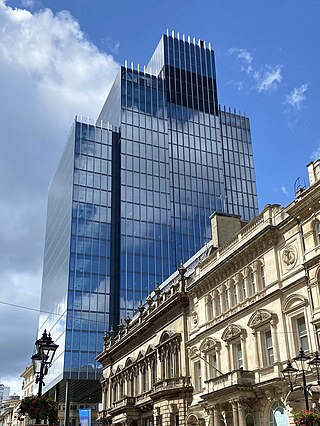
103 Colmore Row is a 108-metre tall, 26-storey commercial office building located on Colmore Row, Birmingham, England. Completed in 2021, this building replaced the former NatWest Tower designed by John Madin and completed in 1975. In 2008, a plan by then owners British Land to demolish Natwest Tower and replace it with a taller modern equivalent was approved. This plan never progressed and in 2015 the building passed to the developer Sterling Property Ventures, who successfully applied to have the building demolished. Construction of the new tower began in June 2019 and completed in 2021.

The Queen Victoria Building is a heritage-listed late-nineteenth-century building located at 429–481 George Street in the Sydney central business district, in the state of New South Wales, Australia. Designed by the architect George McRae, the Romanesque Revival building was constructed between 1893 and 1898 and is 30 metres (98 ft) wide by 190 metres (620 ft) long. The domes were built by Ritchie Brothers, a steel and metal company that also built trains, trams and farm equipment. The building fills a city block bounded by George, Market, York, and Druitt Streets. Designed as a marketplace, it was used for a variety of other purposes, underwent remodelling, and suffered decay until its restoration and return to its original use in the late twentieth century. The property is co-owned by the City of Sydney and Link REIT, and was added to the New South Wales State Heritage Register on 5 March 2010.

The Hotel Windsor is a luxury hotel in Melbourne, Victoria, Australia. Opened in 1884, the Windsor is notable for being Melbourne's only surviving purpose-built "grand" Victorian era hotel. The Windsor pre-dates other notable grand hotels including The Waldorf Astoria in New York, the Raffles Hotel in Singapore, the Ritz in Paris and the Savoy in London.

The Connaught is a five-star luxury hotel, located on the corner of Carlos Place and Mount Street in Mayfair, London. The hotel is owned and managed by Maybourne Hotel Group.
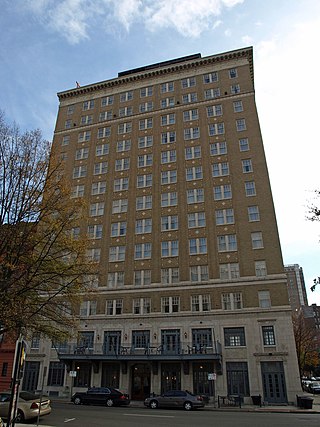
The Redmont Hotel Birmingham, or simply the Redmont Hotel, is a 14-story-tall, 120-room boutique hotel and conference center located on the corner of 5th Avenue North and 21st Street in Birmingham, Alabama, USA. The Redmont, named after Birmingham's Red Mountain is the oldest hotel in Birmingham still in use. It is currently owned by Bayshore Company Tampa, Florida, is managed by Rhaglan Hospitality LLC, and operates as a historic boutique hotel under the Curio Collection by Hilton brand.

William Martin (1829–1900) was a British architect who worked in Birmingham, England, particularly in the practice Martin & Chamberlain.

Corporation Street is a main shopping street in Birmingham city centre, England. Though it has a distinct southern terminus – the junction of New Street and Stephenson Place, adjacent to the entrance of New Street station – the location of its northern terminus is debatable.
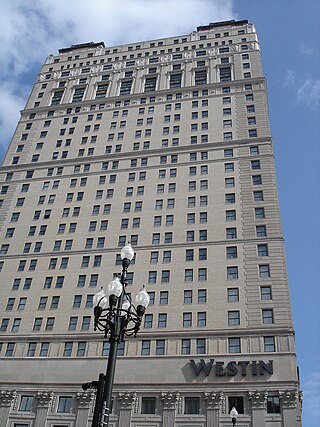
The Westin Book Cadillac Detroit is an historic skyscraper hotel in downtown Detroit, Michigan, within the Washington Boulevard Historic District. Designed in the Neo-Renaissance style, and opened as the Book-Cadillac Hotel in 1924, the 349 ft (106 m), 31-story, 453-room hotel includes 65 exclusive luxury condominiums and penthouses on the top eight floors. It reopened in October 2008, managed by Westin Hotels, after a $200-million restoration.
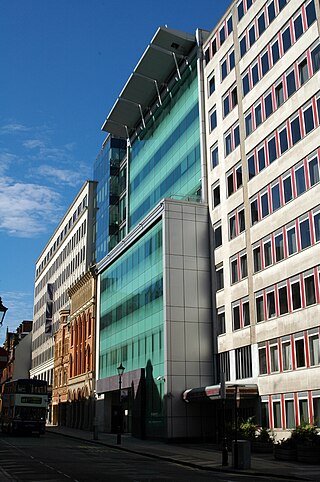
Edmund Street is a street located in Birmingham, England.

Stamford House is a historic building located at the corner of the junction of Stamford Road and Hill Street, in the Downtown Core of Singapore. Originally known as Oranje Building, it formerly housed a shopping mall. The building had since redeveloped along with adjoined Capitol Building and both were reopened as a hotel The Capitol Kempinski Hotel Singapore in October 2018.

Colmore Row is a street in Birmingham City Centre in the centre of Birmingham, England, running from Victoria Square to just beyond Snow Hill station. It is traditionally the city's most prestigious business address.

Architecture in Cardiff, the capital city of Wales, dates from Norman times to the present day. Its urban fabric is largely Victorian and later, reflecting Cardiff's rise to prosperity as a major coal port in the 19th century. No single building style is associated with Cardiff, but the city centre retains several 19th and early 20th century shopping arcades.

The Newcastle Customs House, also known as the Customs House Hotel, is a heritage-listed building designed by James Barnet located at the corner of Bond Street and Watt Street in Newcastle, New South Wales. Built in the Italianate Renaissance Revival style popular at the time, the building suffered damage during the 1989 Newcastle earthquake and reopened as a hotel in 1995.

Transcontinental Hotel is a heritage-listed hotel at 462-468 George Street, Brisbane City, City of Brisbane, Queensland, Australia. It was designed by Francis Drummond Greville Stanley and built from 1883 to 1884. It was added to the Queensland Heritage Register on 21 October 1992.
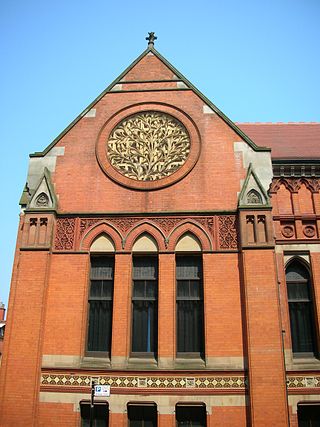
The Birmingham School of Art building was designed for the school of art by architect John Henry Chamberlain from January 1882 until October 1883, and was built from May 31 1884 until its opening in September 1885.
Thomson Plevins (1825-1897) was an English architect, active in Birmingham, England. A number of his buildings are extant, and some have been given listed status, giving them legal protection from unauthorised alteration or demolition.























